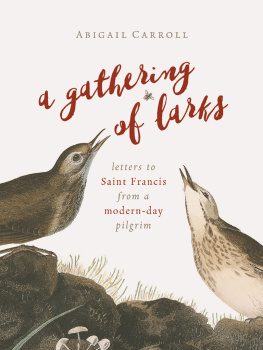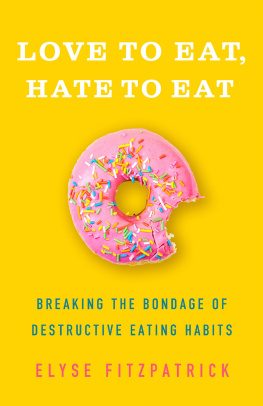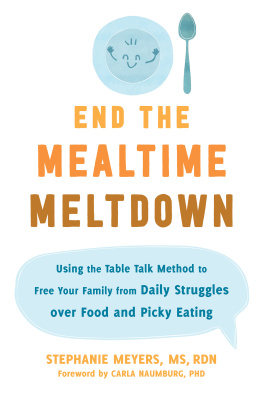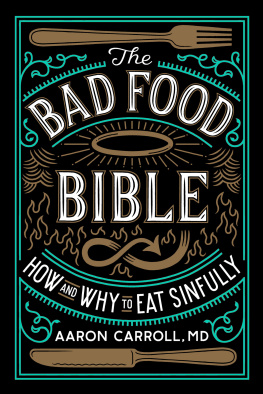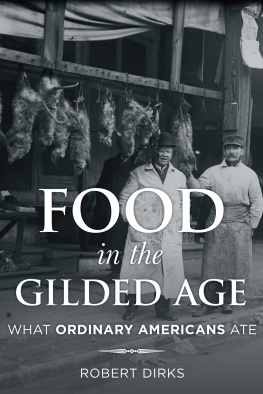MORE ADVANCE PRAISE FOR THREE SQUARES
Combining scholarly rigor with lively storytelling, Abigail Carroll offers a fresh look at American culinary history. Resisting the nostalgia often associated with discussion of family meals, Carroll argues that American dining rituals are relatively modern and are constantly evolving to meet contemporary needs and values. This masterful synthesis will delight both professional scholars as well as newcomers to the exciting new field of food history. Highly recommended!Warren Belasco, author of Meals to Come: A History of the Future of Food, and Visiting Professor of Gastronomy, Boston University
With Three Squares, Abigail Carroll gives us a very long view of American dining habits, beginning with life in colonial times and ending in the 21st century. With sometimes startling descriptions of the ad hoc eating that occurred on either side of a main noon meal in our earliest years, we witness the impact of away-from-home work in industry and commerce that appropriated the middle of the day and left us with cold, quick, and cheap lunches. The story of breakfast cereal and snack foods and the erosion of the properly set, middle-class dinner table with everyone minding their manners caps this fascinating narrative.Sandy Oliver, author of Saltwater Foodways: New Englanders and Their Food at Sea and Ashore in the 19th Century
You will never look at your three meals a day, or snacks throughout the day, the same way after you read this fascinating, well-researched book. For anyone interested in food, this book is a must. It tells the historical stories and elucidates the business forces that underpin our current eating practices.Anne Fishel, Associate Clinical Professor of Psychology, Harvard Medical School, and consultant to The Family Dinner Project
THREE SQUARES
Three Squares
The Invention of the American Meal
Abigail Carroll
BASIC BOOKS
A Member of the Perseus Books Group
New York
Copyright 2013 by Abigail Carroll
Published by Basic Books,
A Member of the Perseus Books Group
All rights reserved. No part of this book may be reproduced in any manner whatsoever without written permission except in the case of brief quotations embodied in critical articles and reviews. For information, address Basic Books, 250 West 57th Street, 15th Floor, New York, NY 10107.
Books published by Basic Books are available at special discounts for bulk purchases in the United States by corporations, institutions, and other organizations. For more information, please contact the Special Markets Department at the Perseus Books Group, 2300 Chestnut Street, Suite 200, Philadelphia, PA 19103, or call (800) 810-4145, ext. 5000, or e-mail .
Composition by Cynthia Young
Library of Congress Cataloging-in-Publication Data
Carroll, Abigail.
Three squares : the invention of the American meal / Abigail Carroll.
pages cm
Includes bibliographical references and index.
ISBN 978-0-465-04096-4 (ebook) 1. Food habitsUnited StatesHistory. 2. DietUnited StatesHistory. 3. Dinners and diningUnited StatesHistory. 4. LuncheonsUnited StatesHistory. 5. BreakfastsUnited StatesHistory. 6. National characteristics, American. 7. United StatesSocial life and customs. I. Title.
GT2853.U5C38 2013
394.120973dc23
2013008929
10 9 8 7 6 5 4 3 2 1
To my family
John, Diana, Cozette, and Julian
who always make dinner special.
CONTENTS
THIS BOOK WAS not supposed to be about the American meal. I had intended to write about the American snack: peanuts, pretzels, popcorn, and all those salty (and sometimes sweet) pleasures we munch at parties, use to nurse our boredom on airplanes, and indulge ad infinitum in front of the television. I had been gathering research for the Indiana State Museum on the relationship between snacking and obesity for a collaborative exhibition with the Science Museum of Minnesota, and as an historian by training, I could not help but wonder about snacking trends before the 1970s, prior to which the data sharply dropped off. So I embarked on my own investigative journey, probing historical newspapers, magazines, novels, letters, cookbooks, and memoirs. I learned a great deal about American snacking habits before my lifetime, but to my surprise, I also discovered something that focused my attention more squarely on the American meal: the snack and the meal cannot be understood apart from one another. They emerged out of the same historical moment, and, as this book reveals, their stories are wholly intertwined.
My investigative journey into the history of snacking, and then into the evolution of the modern meal, started with a simple question: Why? I first began to interrogate my eating habits as a teenager: Why do I always eat cereal in the morning? Why do we say grace at dinner but not at lunch or breakfast? Why do we condemn, or at least scorn, snacking? Of course, the question of why is as much a question of why not. When it comes to the morning meal, why do people choose toast and coffee or biscuits, bacon, and eggs? Why not fries and a hamburger? Or a salad, nachos, mashed potatoes, fish chowder, stir fried broccoli, marinated tofu, or a slice of lemon meringue pie? The more I thought about why we eat as we do, the more I realized how difficult finding the answers would be. They are not spelled out in nutrition texts, explained in cooking manuals, or revealed in advertisements. Nor are they to be found in food-industry trade journals (though here one can garner some clues). Instead, they lie deeply embedded in popular assumptions about what is normal, good, fashionable, healthy, and American. Perhaps no other aspect of our lives is as saturated with popular assumptions as the way we eat. When it comes to meals, our habits have become so deeply engrained that we hardly wonder why we adhere to them. As writing this book has taught me, though, there are reasons.
A certain logic dictates why we eat three meals a day, not two or four; why table manners are standard at dinner when hardly any social rules apply to breakfast; why we consume orange juice in the morning and sandwiches at lunch; why people snack on peanuts at circuses and hot dogs at baseball parks. There are even reasons for garnishing casseroles with potato chips and calling TV dinners TV dinners, even though manufacturers did not originally intend for consumers to eat them in front of a TV. This book is about those reasons.
Most of us think we know why we eat the way we do. We weigh taste against nutrition and nutrition against price, and we make thoughtful decisions about not only what we put into our bodies but also how much, how frequently, and in whose company. In fact, we make many more food-related decisions than we think we doapproximately two hundred every dayand most of them are not deliberate; we simply make them on autopilot. It turns out that environmental factors like the color of a room, the aroma wafting from a kitchen, the wording
More than mere sources of nourishment, our meals are gifts from our ancestors and the cultures in which they lived. We have, to a large extent, inherited the way we eat. Take breakfast, for example. When we pour milk into a bowl heaped with rice puffs or bran flakes, we probably dont realize that this morning meal has a lot to do with nineteenth-century religious health reforms and the belief that a grain-based breakfast was the biblically sanctioned solution to a national case of indigestion. Lunch and dinner are also living artifacts that say as much about the cultures and ideals of the eras in which they were born as they do about our modern lives today.
We may come together as family over a hot meal in the evening to catch up on the days events because we like to, but we also do this because the past prescribes it. When the Industrial Revolution upended the agricultural work schedules of countless farmers-turned-factory workers in the mid-nineteenth century and made it unfeasible for them to eat their main meal in the middle of the day, dinner shifted to the evening. Until then, dinner had not been a particularly social affair. Though food was generally consumed in the presence of family, talking was minimal, as was concern for table manners. But once evening became the only significant portion of the workday when siblings and parents could reconnect, dinner became special, and it still is.
Next page

